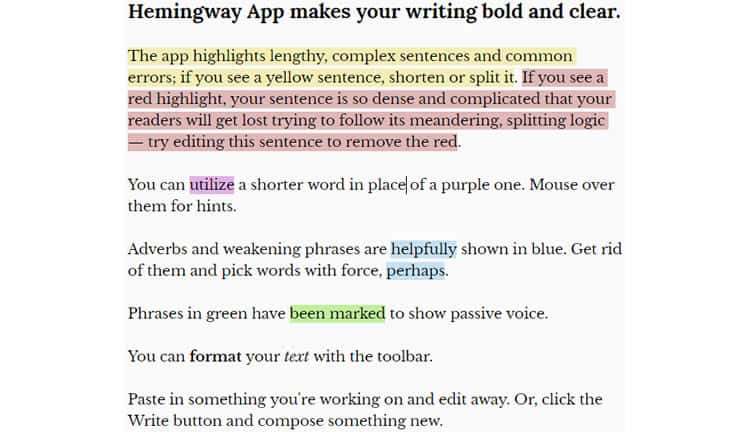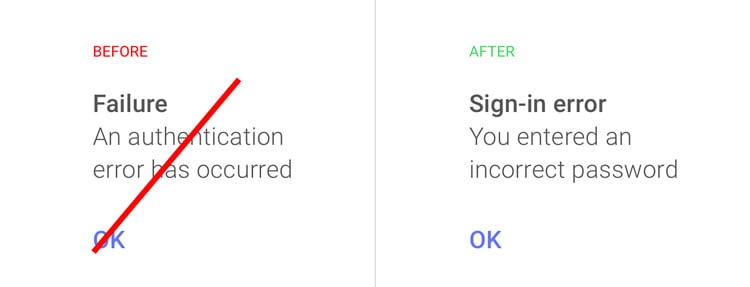
Who writes the content, the copy, all of the text in the platforms you design? Is it you? Your client? The developers? The marketers or SEO gurus? All of the above?
When we consider the words that populate our interfaces, we are usually concerned with their visual properties – typography, line spacing, alignment and how they interact with the other aesthetic components on the screen.
Recently though, the UX world has trained its collective eye on the inherent meaning, significance and connotations of the words we use in our designs, coining an old phenomenon with a new term: UX writing.
It is not entirely surprising we are seeing the rise of UX writing now. With the ascendance of conversational design in the form of chatbots and personal digital assistants like Alexa, user experience designers are being tasked to create platforms that are more conversational, more realistic, and more human.
All of these are accomplished through writing and require the skill sets of a writer who understands the design process. It is no wonder we are seeing more and more agencies value designers that can write, with some major industry players even creating entire positions dedicated to the craft of UX writing.

So in an industry that is increasingly prioritising the written word, how can you hone your UX writing chops? Drawing from my own experiences as a writer for the UX design agency Codal, I put together a quick list of tips to help you brush up on your writing skills.
Do not Shunt It To The Copywriter
Let us start with my favourite piece of advice on the list – do not design the experience, fill it with lorem ipsum, then foist the writing work onto a copy or content writer.
Why? For starters, UX writing is a distinct practice from both copywriting and blogging. A copywriter’s goal is to promote the product, not necessarily make it more user-friendly, and a content writer typically works in a marketing capacity as well, rather than a usability one.
UX writing, on the other hand, concerns itself with all the other text in a digital experience outside of the copywriter’s jurisdiction. That not only means the more extensive content strategy of a platform but also fine pieces of text like CTAs and notification alerts. Your knowledge of the project at hand, likely obtained from a discovery and research phase, should be informing this writing. If you have a third party that is entirely unaware of the project perform the writing, you will end up with a poor experience.
Incorporate UX Writing Into Discovery
Every user experience designer recognises the value of an in-depth discovery phase, but few include the ideal writing, copy, and content of the platform when conducting their user research. What voice, style, and tone resonate with the user? Is there a specific vocabulary or jargon your audience knows (or does not know)?
These are questions with answers that have a measurable impact on the user experience, and they are essential for the designer to understand before they start writing.
UX writers take data-driven approaches to their work, casting aside their personal voice and preferred writing style in favour of a more usable one. Moreover, just like anything else in design, UXers should be able to defend the writing choices they make, preferably with supporting empirical evidence.
Be Concise
Simplicity should be second nature for UXers, and that should not change whether you are using Sketch or Microsoft Word. No matter how much of a preference you have towards certain turns of phrase, or how much you would like to show off by using a five-dollar word you would only see on the SAT, the rule of thumb in UX writing is to keep things concise and uncomplicated.
Simple words and common phrases lead to copy that is far more readable and digestible, ultimately resulting in a more natural experience. There are (rare) occasions where the copy should be more florid and ornate but in general the simpler, the better.
I regularly fall into the trap of getting too creative or cutesy at the expense of the user experience. So to keep myself in check I like to use the tool Hemingway, a free online word processor that doubles as a barometer for the simplicity and coherence of the writing.

I would not recommend writing from scratch in Hemingway, but rather penning your first draft in a more robust program like Word or Google Docs, then copy-pasting to Hemingway for polishing.
Embrace The Cliché
It was Frank Visco who advised writers to ‘avoid cliches like the plague‘, but in the case of UX writing, you do not want to coin new phrases or reinvent the wheel. Words and labels like ‘cart’, ‘profile’, and ‘feed’ are immediately understood by anyone who has been on the Internet before. Do not rename them to something clever or branded as you will confuse the user.
Using Proper Pronouns
While using gender-neutral pronouns is almost always advisable, you should consider how you use first and second person pronouns like ‘I’ and ‘you’ as well. For example, ‘your changes have been saved’ is better than ‘the user’s changes were saved’.

The first person should be utilised when the user is the one making a statement or choice. The most common example would be ‘I agree to the terms & conditions’ or ‘No, I don’t want to receive promotional emails.”
Another Tool In Your UX Toolbox
Ultimately, improving your UX writing means adding yet another weapon to your design arsenal, and an important one at that. User experience design is an intersection of so many different fields and disciplines, and the best designers are ones that are well-rounded and proficient in many of them.
Want to learn more?
Want to get an industry-recognized Course Certificate in UX Writing, UX Design, Design Thinking, UI Design, or another related design topic? Online UX courses from the Interaction Design Foundation can provide you with industry-relevant skills to advance your UX career. For example, Design Thinking, Become a UX Designer from Scratch, Conducting Usability Testing or User Research – Methods and Best Practices are some of the most popular courses. Good luck on your learning journey!
(Lead image: Depositphotos)
